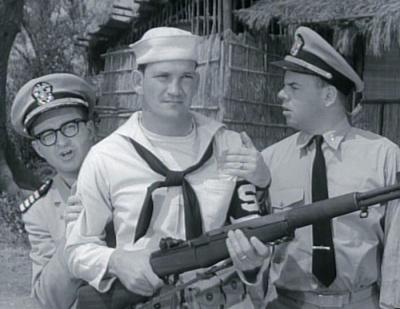The real PT 73
•Laid down 25 December 1941 by Higgins Industries, New Orleans, LA
•Launched 24 July 1942
•Completed 12 August 1942, placed in service and assigned to Motor Torpedo Boat Squadron THIRTEEN (MTBRon 13) under the command of Comdr. James B. Denny, USN
•MTBRon 13 participated in the Aleutian campaign from March 1943 to May 1944. Transferred to the Southwest Pacific, the squadron had action at Mios Woendi, Dutch New Guinea; Mindoro, P.I., and Brunei Bay, Borneo. It alsobased for a time at Dreger Harbor, New Guinea, and San Pedro Bay, P.I., but had no action from these bases. As part of Task Unit 70.1.4, Squadron 13 was awarded the Navy Unit Commendation for action at Mindoro fromDecember 15 to 19, 1944•Grounded 15 January 1945 off Lubang Island, Philippines and destroyed by her crew to prevent capture.
PT-73 Under the command of Lt(jg) William R. McQuilkin and PT-75 had delivered supplies to the Mindoro guerrillas at Abra de Ilog and taken their leader aboard for the night's patrol. Close off Lubang Island, N.W. of Mindoro, PT-73 ran hard aground on an uncharted reef.
LCDR Rowe, the guerrilla leader, said there was a garrison of about 300 enemy troops on the nearby island. Fearing an attack if the boat’s location became known, McQuilkin ordered the boat stripped and abandoned.
After removing all important documents and equipment from their boat, the crew, of PT-73 was taken aboard PT-75 and the stranded hulk was torched to prevent capture.Information

Warning: This is a relatively older thread
This discussion is older than 360 days. Some information contained in it may no longer be current.
- Knowledge Library

- MKL Entry of the Month
- Australia
- Austro-Hungarian Empire
- Canada
- Czechoslovakia
- Denmark
- Finland
- France/Belgium
- Germany
- Italy
- Japan
- Norway
- Russia
- South America
- Sweden
- Switzerland
- Turkey
- United Kingdom
- United States
- Yugoslavia
- Is my rifle authentic or a fake?
- Jay Currah's Lee Enfield Web Site
- On-line Service Records (Canada)
- Technical Articles/Research
- Forum
- Classifieds

- What's New?
-
Photo Gallery

- Photo Gallery Options
- Photo Gallery Home
- Search Photo Gallery List
-
Photo Gallery Search
- Video Club

- iTrader















 PM
PM
